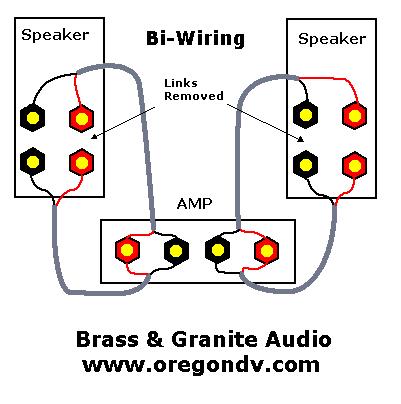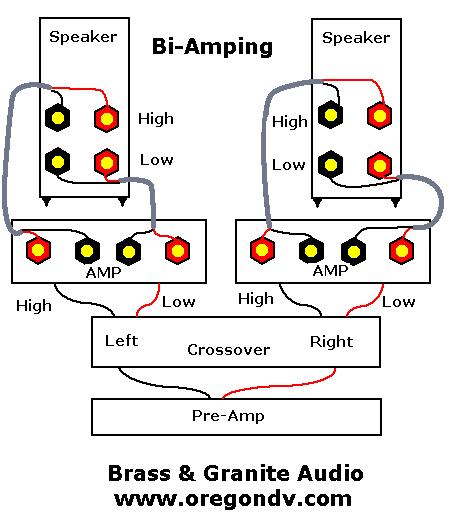|
Audio
- Home Theater FAQ's and Information
Back
to FAQ's Home
Bi-Wiring
& Bi-Amping
What
is the difference between bi-wiring and bi-amping?
Bi-wiring is using the same power source (amplifier) but separately
connecting that power source to a woofer and a midrange/tweeter on a
speaker.
Bi-amping is using two separate power sources (amplifiers) and
connecting one amplifier to a woofer and the other amplifier to a
midrange/tweeter on a speaker.
How do I bi-wire?
Your speaker must have two separate positive and negative
connections (one set for the woofer and one set for the
midrange/tweeter). Connect one wire between the positive terminal on
the amplifier/receiver the positive terminal on the speaker. Connect
the other wire from the negative terminal on the amplifier/receiver
to the corresponding negative terminal on the speaker. Remove the
jumper straps connecting the two sets of speaker inputs. Repeat this
process for the second set of terminals on the speaker, connecting
them to the same positive and negative terminals on the
receiver/amplifier. Repeat the steps for each speaker you wish to
Bi-Wire, connecting them to the appropriate terminals on your
receiver/amplifier.

How do I bi-amp?
Bi-amping is similar to bi-wiring, but involves separate
amplifiers: one for the woofer and one for the midrange/tweeter.
Passive bi-amping involves a direct hookup between each amplifier
and the speaker terminals. True bi-amping involves hooking the
preamp to an electronic crossover that replaces the passive
crossover network in the speaker. The active crossover then connects
to multiple power amplifiers. For example, one amplifier for the
woofer and another amplifier for the mid/highs. The internal speaker
crossover network must be eliminated. bi-amping is a difficult and
expensive approach that is not typically employed.

Brass
& Granite Audio
www.Oregondv.com
Salem, OR 97303
See our our other sites:
www.soundocity.com
www.speakerfeet.com
www.speakerfeet.net
www.soundocity.com/beta/
www.loudspeakerstands.net
|